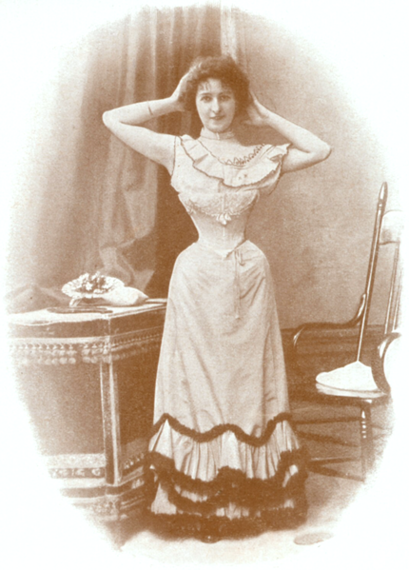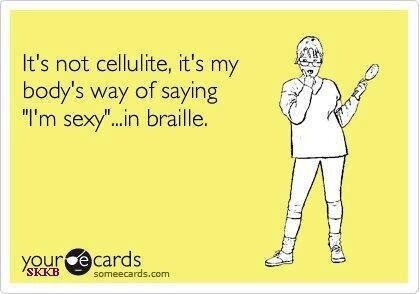It started with the corset. Swoon-inducing, painful and potentially dangerous, the Victorian corset fad signalled the start of extreme body obsessions among women. Sure, there had been diets and weight loss techniques before, but this intestine-twisting trend, known as tight-lacing, focused less on becoming altogether slimmer and more on transforming a specific body part to comply with the current ideal.
By the 20th century, this particular quest for hourglass curves had faded, seen by most as oppressive and low class. But a century later and the corset trend has been revived, appropriated by the likes of Jessica Alba, who wore a "double corset day and night for three months" after the birth of her two children to help her get back to her pre-baby shape.
The corset trend was just the start. Today, we're looking at a society of females prepared to go to extreme lengths to comply with the so-called ideal - an ideal which is realistically unobtainable for most. Alba's tight-lacing routine was a response not-only to the desire to achieve an hourglass figure, but also to trim down to her pre-baby weight in record speed.

19th century tight lacing. CC-PD, Dupont, Das Album, Dupont/Wikimedia Commons/Public Domain
From Kim Kardashian to Kate Middleton, rapid postpartum weight loss has now become the norm among new celeb mums. A feat often met with admiration among the media, it has subsequently set the standard for weight loss among ordinary women the world over. Of course, losing that amount of weight that quickly is nigh on impossible without a personal trainer, nutritionist and live-in nanny. Oh and it's not entirely recommended by doctors either.
So what came next in the timeline of unrealistic body fads? Oh yes, size 00. While naturally very skinny women rejoiced that their body type was finally recognised by mainstream retailers, a portion of female society saw this movement as a call to action. We were presented with a wave of celebs exercising and dieting in the extreme in order to go one better than size zero. If self-starvation is what it took to reach negative numbers, then so be it. The obsession seemed to pass (or, at least, we stopped talking about it) following the death of catwalk model, Luisel Ramos from malnutrition. But it appears we haven't learnt our lesson.
Last month, Grazia published an exposé on the shocking rise of triple 000 on the U.S highstreet. 'These days, double- zero sizes don't cut it either. Size triple zero is the number-one goal here' proclaimed Grazia's L.A Hollywood source. To put that into perspective, it's the equivalent of a UK size 0, six sizes smaller than 'the ideal dress size' 12 and eight sizes smaller than the UK average.

Bikini bridge. Source: Twitter
Of course, while all this is going on, we're still expected to be working on our thigh gaps and bikini bridges (originally a hoax by 4chan, but a quick search for 'bikini bridge' on Pinterest suggests this recent obsession is no joke), while maintaining a perfect head of hair and mastering the art of contouring. Is it possible to maintain or even achieve this level of "perfection"?
Let's be realistic. There are women for whom a three inch a thigh gap or a sharp pelvage are the natural result of a petite frame. No work required. For many others though, these fads are entirely unachievable - and not just because of financial/lifestyle constraints but literally, physically impossible. Yet we're constantly bombarded with the notion that women can do it all; that there is a breed of super women in both Celeb Land and our Facebook feeds who are completely winning at life.
However, for all the negative messages the internet spreads about body image, there's a plethora of sites, memes and pins that seek to reassure and re-normalise the normal. Fatspo was introduced to counter thinspiration, with sassy Someecards humorously turning thinspo mantras on their head, e.g. 'nothing tastes as good as thin feels. Except cake and pie and not needing everyone's approval.' And, anyone searching for this particular type of weight-loss encouragement on Tumblr or Pinterest is met with concern for their wellbeing and a phone number for eating disorder helplines.

Source: Someecards by lanner.az
Within these social realms are active communities championing body confidence, such as lovingthebeautifulyou.tumblr.com, a Tumblr blog created by Melissa because she knows 'personally how it feels to watch TV and see ads in magazines of photo-shopped models, and unhealthy beauty ads, and to feel pressured to realize this perfection at any cost, even though this "perfection" is unattainable.' These groups achieve a huge following, acting as a place where messages of body pride and self-love can be spread and enjoyed whilst putting into words and pictures the frustration of women who feel marginalised because of the way they look.
But while these voices of reason are growing stronger, they remain outnumbered. Data from Topsy tells us that in the past 30 days #thinspo garnered around 23k tweets, while #bodypositive gained just 1.4k. Isn't it high time we accept that women come in all different shapes and sizes? That although these features are normal for some, they're not the norm? That our expectations for womankind are often unfair and unrealistic? That women can't - and probably don't want - to be #doingitall?